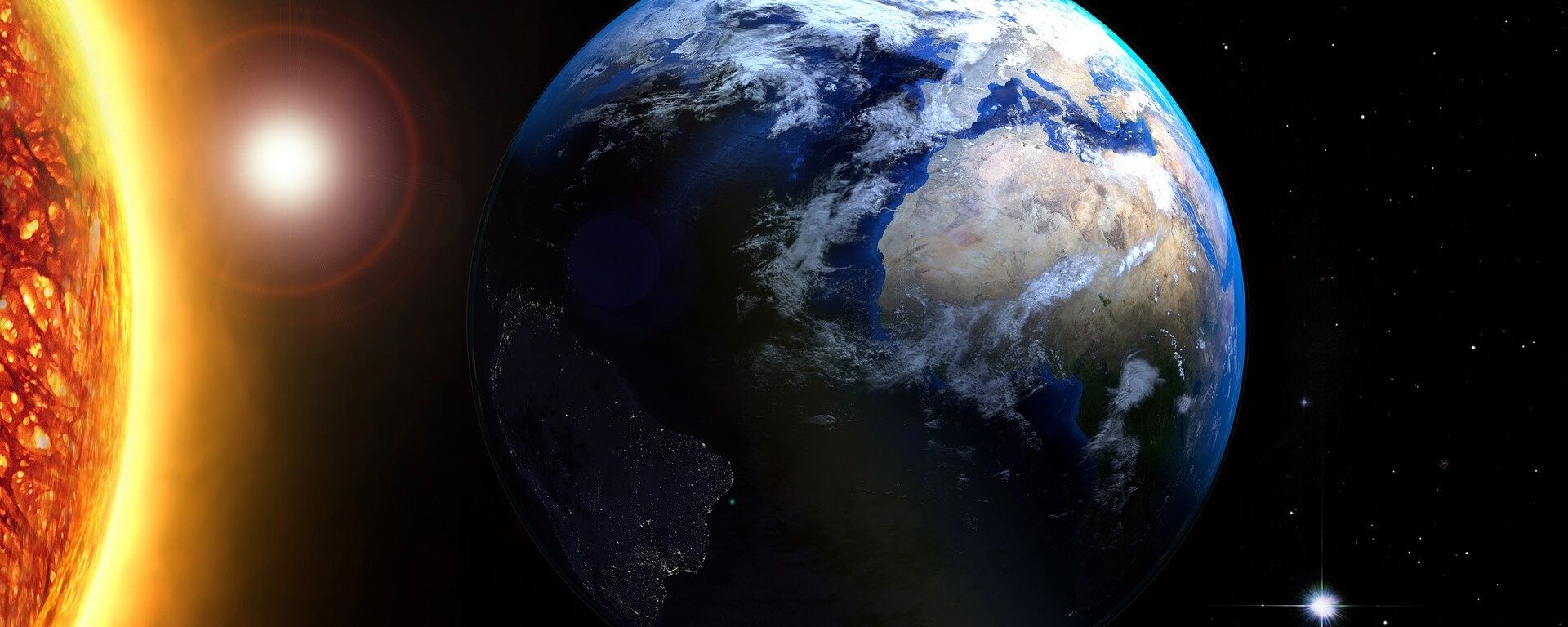https://sputnikglobe.com/20230405/ancient-earth-may-have-been-quite-slushy-and-not-ball-of-ice-study-shows-1109163909.html
Ancient Earth May Have Been Quite 'Slushy,' and Not Ball of Ice, Study Shows
Ancient Earth May Have Been Quite 'Slushy,' and Not Ball of Ice, Study Shows
Sputnik International
Snowball Earth theory disputed by new research, claiming panet was not totally frozen oversometime 650 million years ago, during the Cryogenian period, and had slushy patches.
2023-04-05T14:52+0000
2023-04-05T14:52+0000
2023-04-21T10:43+0000
science & tech
planet earth
ice
https://cdn1.img.sputnikglobe.com/img/07e4/0c/08/1081397710_46:0:1875:1029_1920x0_80_0_0_90d5318f7ddd8fd195e14d0adc347c77.jpg
Our planet Earth was so cold millions of years back that ice shrouded its surface for the greater part. But new research by Chinese scientists is now suggesting that the so-called “freeze” was somewhat more mild than previously believed. In fact, the surface of our planet may have been quite “slushy,” according to findings published in the journal Nature Communications. This would appear to dispute the longstanding "Snowball Earth" theory. This hypothesis has long claimed that an episode occurred sometime before 650 million years ago – during the Cryogenian period – that led to Earth’s surface succumbing to an overwhelming ice shield that encased it entirely.The study honed in on earlier speculations that, perhaps, this icy cover was not all that uniform, and there remained some areas of “slush,” or open ocean not frozen over. It was these pockets of slush that could have enabled oxygen to get through, generating what would become the incubators of living organisms. In fact, there were multiple clues to this effect, such as fossil deposits made by glaciers near the equator. These were identified as seaweed in a layer of black shale in central China’s Hubei province. This could be taken as indication that habitable marine environments were more widespread billions of years ago than previously thought. According to the scientists, shale in the Nantuo Formation, southern China, can tell quite a fascinating story about the conditions in oceans billions of years ago.The team analyzed levels of iron and the presence of nitrogen to see if oxygen was, indeed, piercing through the ocean.Thus, the findings appear to prove that the world’s oceans at the time were not completely frozen, allowing a habitat for multicellular organisms.
https://sputnikglobe.com/20230222/we-need-to-go-deeper-earth-has-one-more-layer-and-its-leviathan-iron-core-study-says-1107691509.html
Sputnik International
feedback@sputniknews.com
+74956456601
MIA „Rossiya Segodnya“
2023
News
en_EN
Sputnik International
feedback@sputniknews.com
+74956456601
MIA „Rossiya Segodnya“
Sputnik International
feedback@sputniknews.com
+74956456601
MIA „Rossiya Segodnya“
snowball earth theory, planet earth, millions of years ago, ice shrouded its surface, freeze was more mild, earth surface might have been slushy, disputing snowball earth theory, episode 650 million years ago, during cryogenian period,
snowball earth theory, planet earth, millions of years ago, ice shrouded its surface, freeze was more mild, earth surface might have been slushy, disputing snowball earth theory, episode 650 million years ago, during cryogenian period,
Ancient Earth May Have Been Quite 'Slushy,' and Not Ball of Ice, Study Shows
14:52 GMT 05.04.2023 (Updated: 10:43 GMT 21.04.2023) The habitable planet we now populate – Earth – boasts a tumultuous 4.5-billion-year history. According to the so-called “Snowball Earth” theory, between 700 million and 600 million years ago, ice encased the entire planet.
Our planet Earth was so cold millions of years back that ice shrouded its surface for the greater part. But new research by Chinese scientists is now suggesting that the so-called “freeze” was somewhat more mild than previously believed. In fact,
the surface of our planet may have been quite “slushy,” according to findings
published in the journal
Nature Communications. This would appear to dispute the longstanding "Snowball Earth" theory. This hypothesis has long claimed that an episode occurred sometime before 650 million years ago – during the Cryogenian period – that led to Earth’s surface succumbing to an overwhelming ice shield that encased it entirely.
The study honed in on earlier speculations that, perhaps, this icy cover was not all that uniform, and there remained some areas of “slush,” or open ocean not frozen over. It was these pockets of slush that could have enabled oxygen to get through, generating what would become the incubators of living organisms. In fact, there were multiple clues to this effect, such as fossil deposits made by glaciers near the equator. These were identified as seaweed in a layer of black shale in central China’s Hubei province. This could be taken as indication that habitable marine environments were more widespread billions of years ago than previously thought. According to the scientists, shale in the Nantuo Formation, southern China, can tell quite a fascinating story about the conditions in oceans billions of years ago.
The team analyzed levels of iron and the presence of nitrogen to see if oxygen was, indeed, piercing through the ocean.
"We found evidence of ice-free conditions at mid-northern paleolatitudes (locations before continental drift). Until now, ice-free areas had been identified only in peri-equatorial regions," Huyue Song, China University of Geosciences geobiologist and lead author of the study, told media.

22 February 2023, 09:10 GMT
“Our study shows that, at least near the end of the Marinoan ‘Snowball Earth’ event, habitable areas extended to mid-latitude oceans, much larger than previously thought. Previous research argued that such habitable areas, at best, only existed in tropical oceans. More extensive areas of habitable oceans better explain where and how complex organisms such as multicellular seaweed survived,” Song added.
Thus, the findings appear to prove that the world’s oceans at the time were not completely frozen, allowing a habitat for multicellular organisms.


